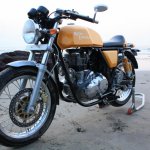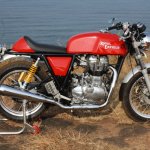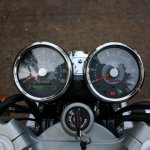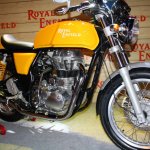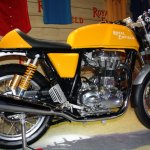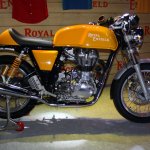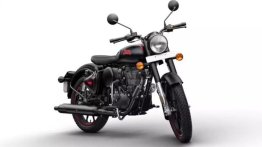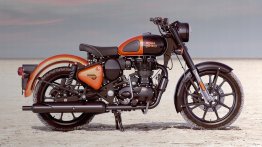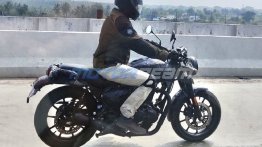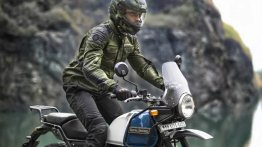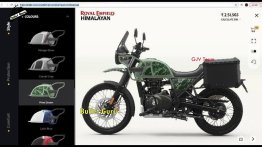Let's face it. As a company, Royal Enfield loves to smack you with a right whilst pretending to be a leftie all the time. With the Continental GT, it has done precisely that. As if selling a bike in these tough economic conditions isn't tricky enough, the Chennai-based company seeks to sell a concept as well.
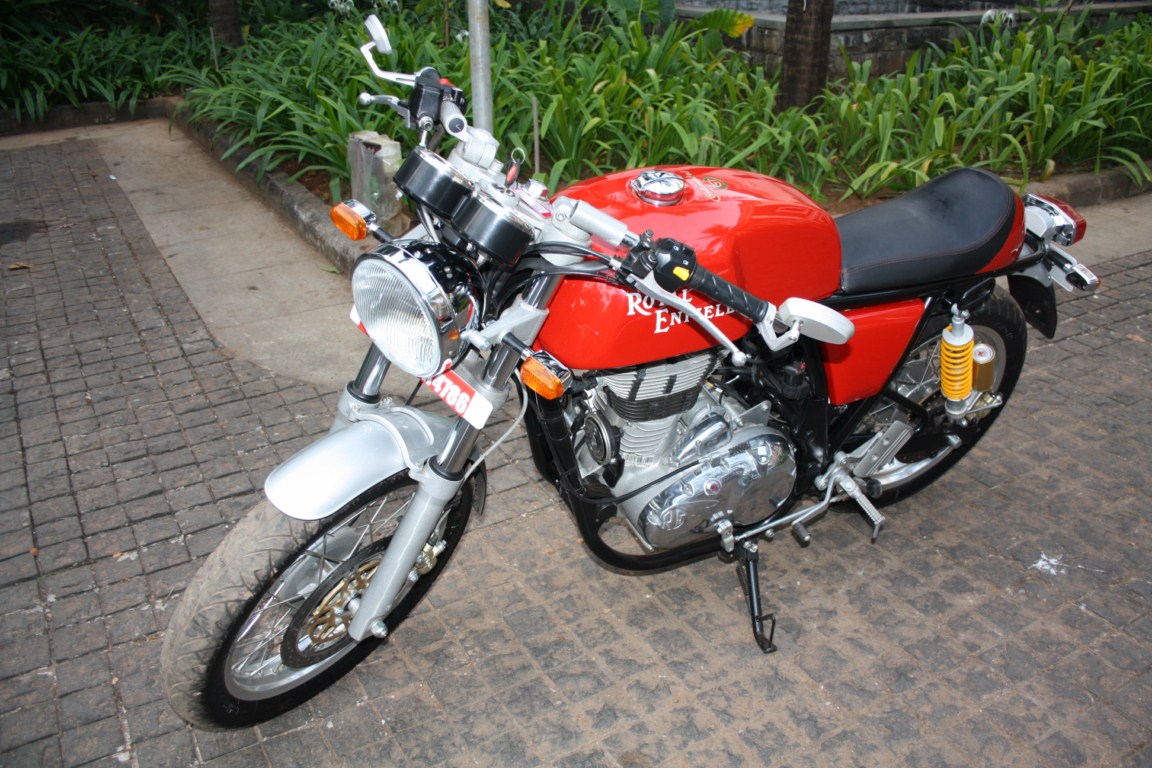
The practice of cafe-racing originated way back in the 1950s and '60s with kids in Britain fabricating bits and pieces on their own and bolting them on to single-cylinder bikes available in the market. With this, the kids raced from one cafe to another. This was more than just building a bike, it was building a culture. When Royal Enfield got wind of this, they did the obvious and came up with a bike that was easier to modify. The 1965 Royal Enfield Continental GT was the panacea of the youth. It was quick, nimble, easy to strip down or soup up.

Turn the page to 2013 and the present day Royal Enfield has set the clock back. With the 2013 Continental GT, what Royal Enfield proposes to do is rather simple. They want us, the casual enthusiast, to get down on our knees and get our hands greasy.
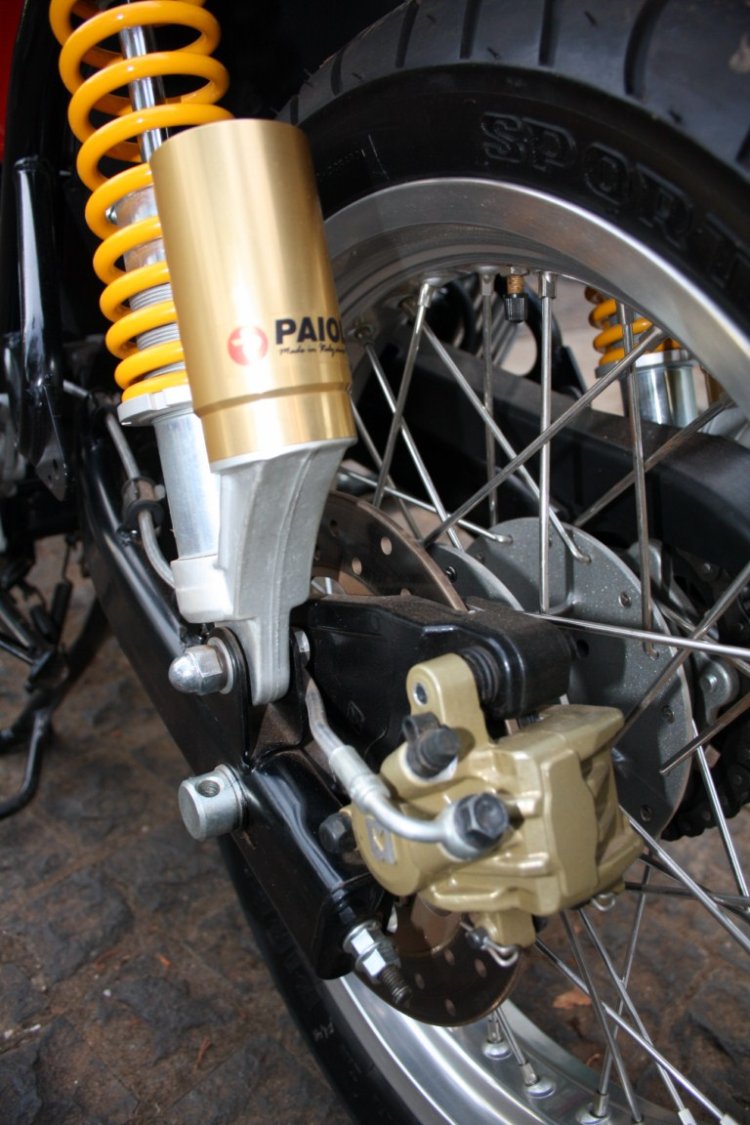
There are no two ways about it, the Continental GT looks absolutely gorgeous. Be it its elongated petrol tank or its wasp seats, it's obvious that there's a lot more to the looks of the bike than a CAD drawing on a computer. The 13.5 liter petrol tank runs in a straight line with the flat seat, both being parallel to the ground. This, coupled with the clip-on handlebars makes for an extremely comfortable riding posture. Seated on the saddle, the leg rests are where you'd intuitively expect them to be. You don't really need to turn your head down to see where to put your legs. Credit is due to both Royal Enfield's design team in Chennai and their partners for this project, Xenophya from UK.

The Continental GT gets a 535 cc engine. The engine is the 500 cc motor from Royal Enfield's Unit Construction platform that we are familiar with. Thanks to the unique requirements of this bike, the normal 500 cc engine's bore was increased by 3 mm to provide the extra volume. The difference this 3 mm has made becomes blatant when you begin your ride.
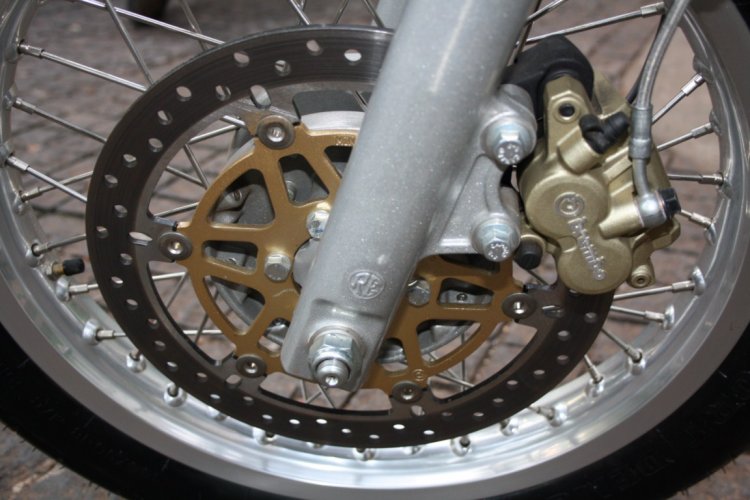
Power delivery at the lower end of the rev-counter is patchy at best, requiring more than ideal throttle input in the first couple of gears, when the revs stay under 2,000 rpm. Take it past that mark and the bike turns into a new animal. Between 2,000 and 4,000 rpm, the bike comes alive, the torque kicks in and you instinctively tuck in your knees tighter around the beautifully sculpted fuel tank. Sadly, the bike has very little to give past the 4,000 to 4,500 rpm mark and this is a bit of a letdown, especially as the bike gobbles up the rev counter thanks to the abundant torque.

Shifting through the long and winding roads of Coastal Goa during the test ride, the bike loved changing direction. Thanks to a twin downtube cradle frame from Harris Performance of UK, you can weave in and out of traffic with considerable ease. Although, the bike would be even zippier had it been a tad lighter. Tipping the scales at 184 kg, it's a fair bit of weight to lug around. The 55:45 weight distribution does a world of good, especially when you seek stopping power. The twin piston brake discs at the front from Brembo do a great job of stopping this bike on its tracks. The 300 mm front brakes do such a grand job that you barely need to bother your right foot.
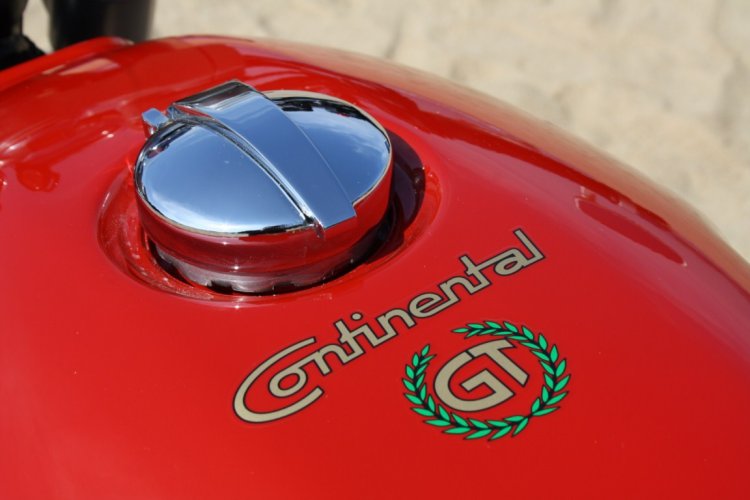
The Continental GT doesn't make for a great cruising bike. Standalone, the bike can easily handle a cruise speed of 100 kph on the 5th or even the 4th gear, but compared to other offerings from the Royal Enfield stable, the Continental GT pales a bit. However, the bike wasn't made for cruising, so whatever you get is a bonus. As with any single cylinder engine, vibrations start to become a bit bothersome once you cross the 100 kph mark. However, when you're bolting down a highway at that speed, the only thing that'll really bother you is how easily the Continental GT gets you to grin. The winding and undulating roads of Goa provided the perfect fodder for the bike's handling. Switching left to right on the twisty bits of the road was a guaranteed recipe for both an adrenaline jolt and a fat grin.
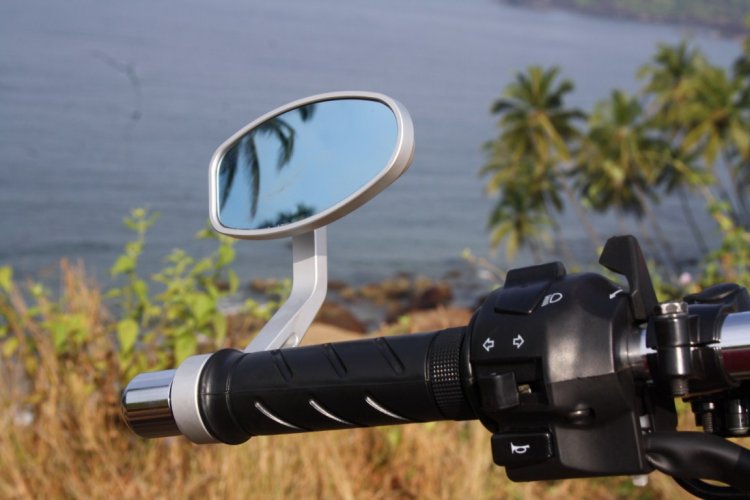
Anything that puts this big a grin on your face with just a twist of your wrist can compensate for a few niggles and the Continental GT does have a few of those. The front suspension's a bit too hardly wound for Indian roads and that coupled with the vibrations past a certain speed can cause a spot of bother. The bike's performance towards the top-end of the rev counter is a tad disappointing as well. More so because the evocative soundtrack from the exhaust makes you want to explore the revs a lot more. That said, the rear suspensions from Paioli are adequate.
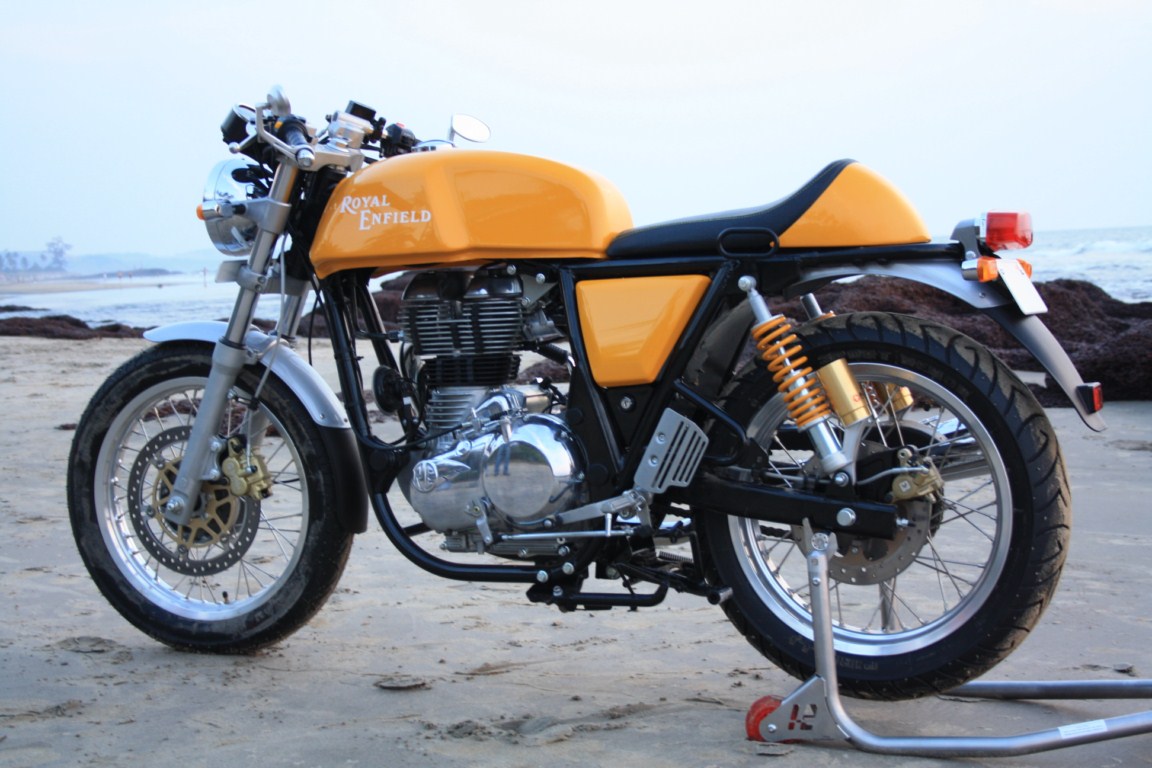
The Continental GT gets the same set of switches as the Classic series. The bike, per se, has been put together very well. Effort has gone into making the bike more appealing for the export market as well as is seen from the imported brakes and rear suspension unit.
The jury's out on whether a single bike can revive a culture that is so deep-rooted in being able to stand out. Do yourself a favour, and your partner a disservice, and choose the wasp-seat version or the one with the cowl seat. If you do feel a moment of resignation and go for the two-seater version, prepare to experience an entirely different bike than what has been described above.
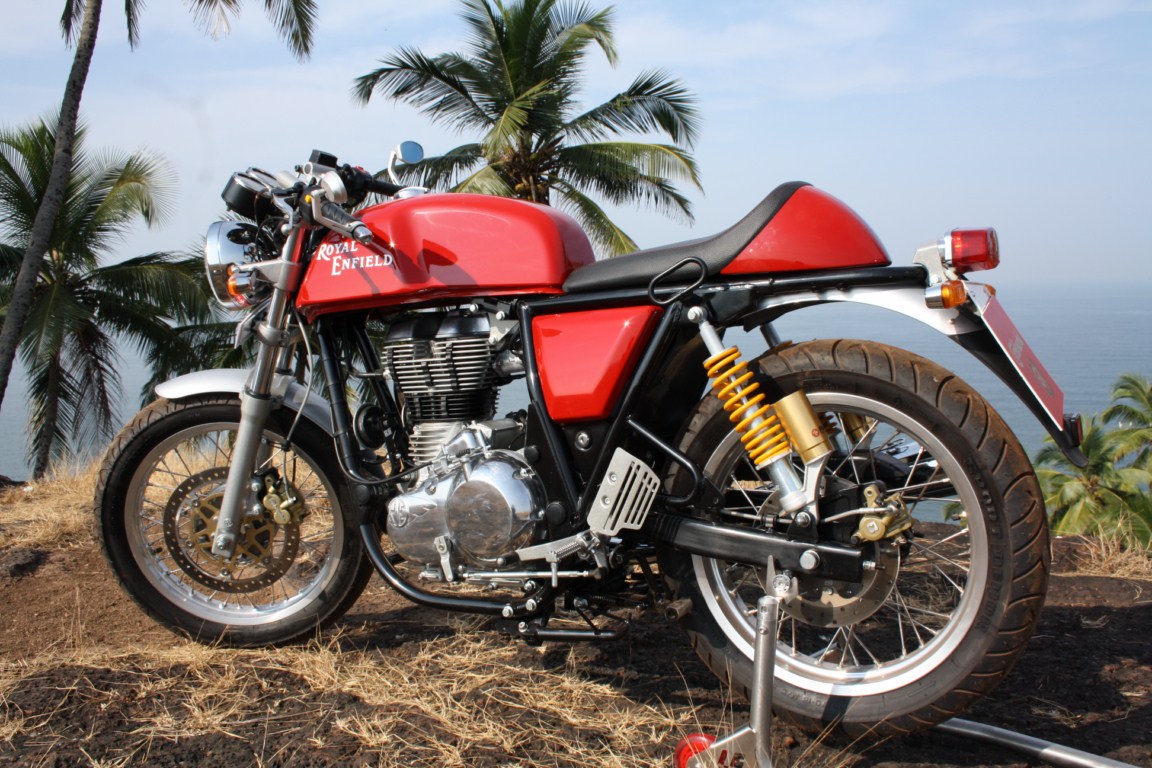
The Continental GT then makes you feel a bit existential. Gun the throttle and you'd wonder if your eyes got the name of the bike right. It feels, rides, handles, cruises and steers like no other Royal Enfield so far. If that, the looks and the price - Rs 2.14 lakh (On road, Mumbai) - doesn't get you rushing to the nearest dealership, knowing that a strikingly beautiful yellow version is set to be out by April 2014 would.



